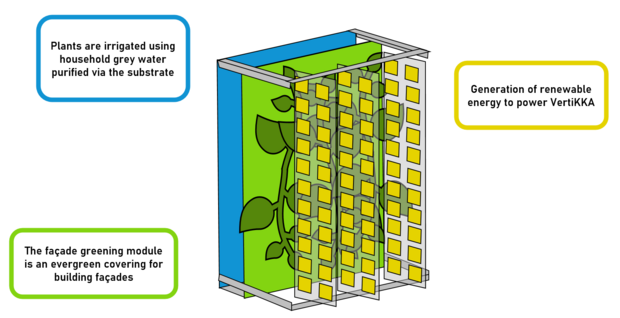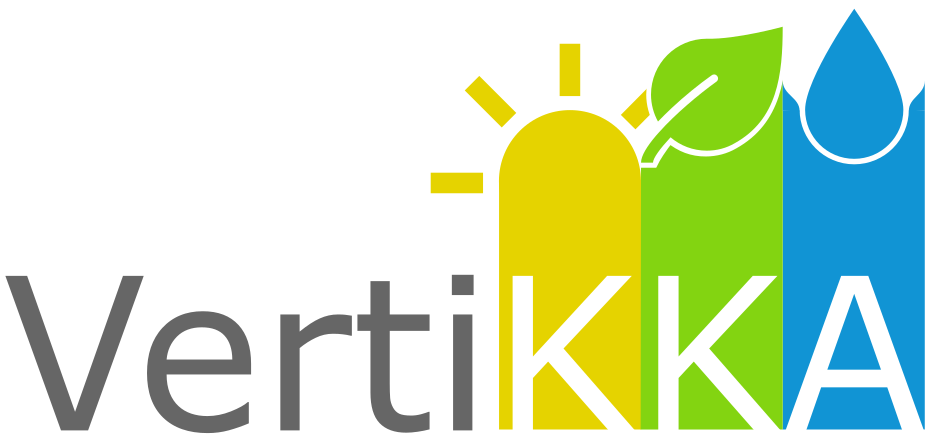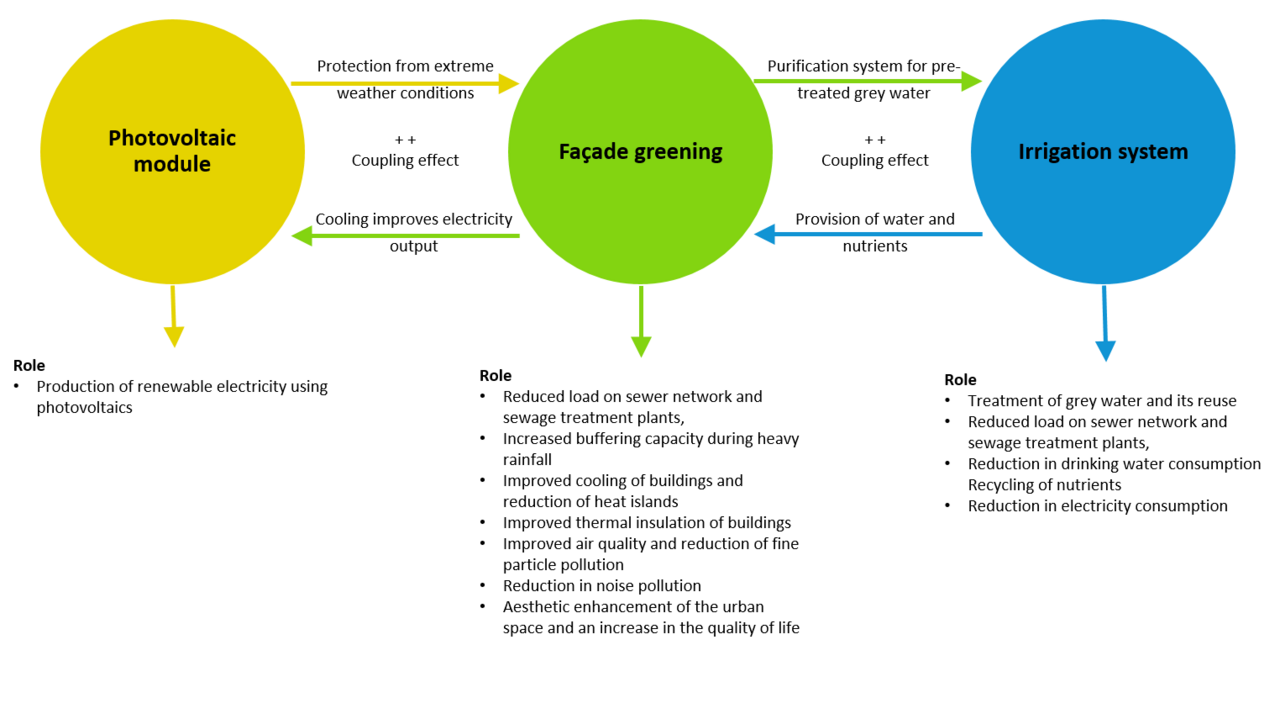
VertiKKA aims to combine the proven components of façade greening and photovoltaics (PV) with innovative wastewater management to create a complete space-saving, multi-functional solution for urban spaces. In doing so, VertiKKA’s prime aim are the synergy effects that result from this solution: these are the unique selling point and the innovative core of VertiKKA.
In brief, the synergy effects are:
- the PV modules protect the plants against extreme weather conditions,
- used water is permanently available as irrigation water
- Higher PV electricity yields due to the cooling effects of the plants
Role of each component
Photovoltaic modules
Building façades offer a surface potential for photovoltaic modules which remains under-exploited. The annual electrical yield of a façade PV system is lower than that of a roof PV sys-tem, however with the right choice of PV module, façades can also be used economically and intel-ligently for electricity generation.
Role
- Production of renewable electricity using photovoltaics
Façade greening
Façade greening systems range from simple soil-bound trellis systems to new wall-bound technical green modules such as those used in VertiKKA. The potential of façade greening in urban areas exceeds the ground area available for urban greening many times over. Depending on the type and design of façade greening selected, a variety of positive climatic, ecological, medical, economic and design effects can be achieved.
Roles
- Increased buffering capacity during heavy rainfall
- Improved cooling of buildings and reduction of heat islands
- Improved thermal insulation of buildings
- Improved air quality and reduction of fine particle pollution
- Reduction in noise pollution
- Aesthetic enhancement of the urban space and an increase in the quality of life
Irrigation system
VertiKKA uses pre-treated grey water to supply the plants in the green modules with water and nutrients in a resource-efficient manner. Grey water is lightly polluted wastewater from bathrooms, showers or washing machines. This is collected through pipe systems and kept separate from faecal wastewater from toilets and kitchen wastewater, which is more highly contaminated with fats and food residues. After mechanical pre-treatment and further treatment stages if required, the grey water is continuously pumped over the substrate of the plants in the VertiKKA module.
Roles
- Treatment of grey water and its reuse
- Reduced load on sewer network and sewage treatment plants
- Reduction in electricity consumption
- Recycling of nutrients
- Reduction in drinking water consumption
Photovoltaic modules
The PV modules protect the façade greenery from extreme weather and high solar radiation.
The energy from the photovoltaic modules drives the irrigation system.
Façade greening
The plants evaporate water through their leaves, causing an evaporative cooling effect. This cooling is particularly useful in summer and at high temperatures. Since high temperatures reduce the efficiency of PV modules and their electricity yields, evaporative cooling helps to compensate for these energy losses.
The façade greenery acts as a sewage treatment plant for the pre-purified grey water. This saves drinking water and nutrients are recycled.
Due to the purification capacity of both the substrate and the plants in the green module, less wastewater has to be sent to municipal sewage treatment plants. According to the Federal Environment Agency, this wastewater is responsible for 20% of electricity consumption of all municipal facilities.
Irrigation concept
The irrigation modules supply the plants with water.
The continuous addition of nutrients from the used water strengthens the plants and helps them to withstand the extreme site conditions of a building façade.
How VertiKKA works on and in the house
Lightly polluted wastewater from showers, washing machines and hand basins (grey water) is used to irrigate the VertiKKA modules. Inside the modules, the grey water is used to water the plants and is purified. The purified water can then be used for various purposes in the house and garden.


